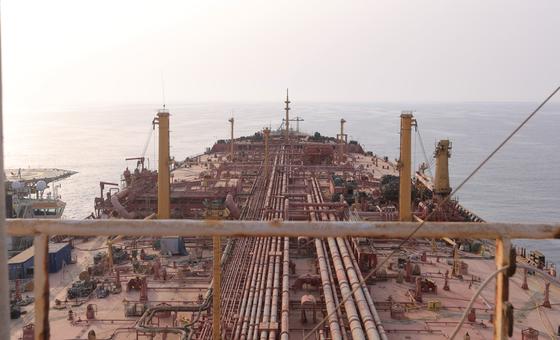The UN has been running a complex operation to transfer crude from a rotting supertanker stranded off the coast of Yemen since 2015. The 19-day operation will pump more than a million barrels from the rusting vessel called the Safer to another nearby replacement vessel.
He General secretary He declared that the UN has taken over the delicate operation, since a spill would mean an environmental catastrophe for the region.
“The United Nations has launched an operation to defuse what could be the world’s biggest time bomb. It is a mission in which everyone must be involved and which marks the culmination of nearly two years of groundwork political, fundraising and project development”, declared António Guterres, when the start of the works was announced.
Located north of the Yemeni port of Hudaydah, UN officials have been warning for years of the possibility of the 47-year-old tanker breaking up and exploding. The ship contains four times the amount of crude oil spilled by the Exxon Valdez, enough to make it the fifth largest oil spill in history.
existential marine threat
He United Nations Development Program (UNDP) warned that a massive spill from the Safer would destroy swaths of marine life in the Red Sea.
In statements to the press in Geneva, the spokeswoman for that UN agency Sarah Bel expressed her concern for the fishing communities of the Red Coast of Yemen, who already live in a critical situation, since a spill could “instantly wipe out the livelihoods of 200,000 people” and “fish stocks would take twenty-five years to recover.”
Bel described the operation as the first of its kind and warned of the danger during this “emergency phase” but assured reporters that everything had been put in place to “ensure its success.”
The floating oil storage and transfer unit called Safer has been docked for more than 30 years some 4.8 nautical miles southwest of the Ras Issa peninsula on Yemen’s western coast. In 2015, production and maintenance of the tanker ceased due to the outbreak of conflict between a Saudi-led pro-government coalition and Houthi rebels. As a consequence, the ship can no longer be repaired.
Humanitarian and environmental catastrophe
According to the UNDP, an oil spill would cause the closure of all ports in the area, which would cut off the supply of food, fuel and other vital supplies to Yemen, a country where 80% of the population already depends on humanitarian aid.
The ON Secretary General warned that the cost of the cleanup alone would be as high as $20 billion and said shipping to the Suez Canal could be disrupted for weeks.
Guterres praised the collaboration of the UN with different organizations and interlocutors and highlighted the “relentless political work” that the operation entailed “in a country devastated by eight years of war.” But he noted that this was only a “stepping stone” as the next step is to fix the replacement vessel to a specialized safety buoy.
The UN Secretary General has requested another $20 million to complete the project, which includes scrapping the Safer and removing any environmental threats that may remain in the Red Sea.













